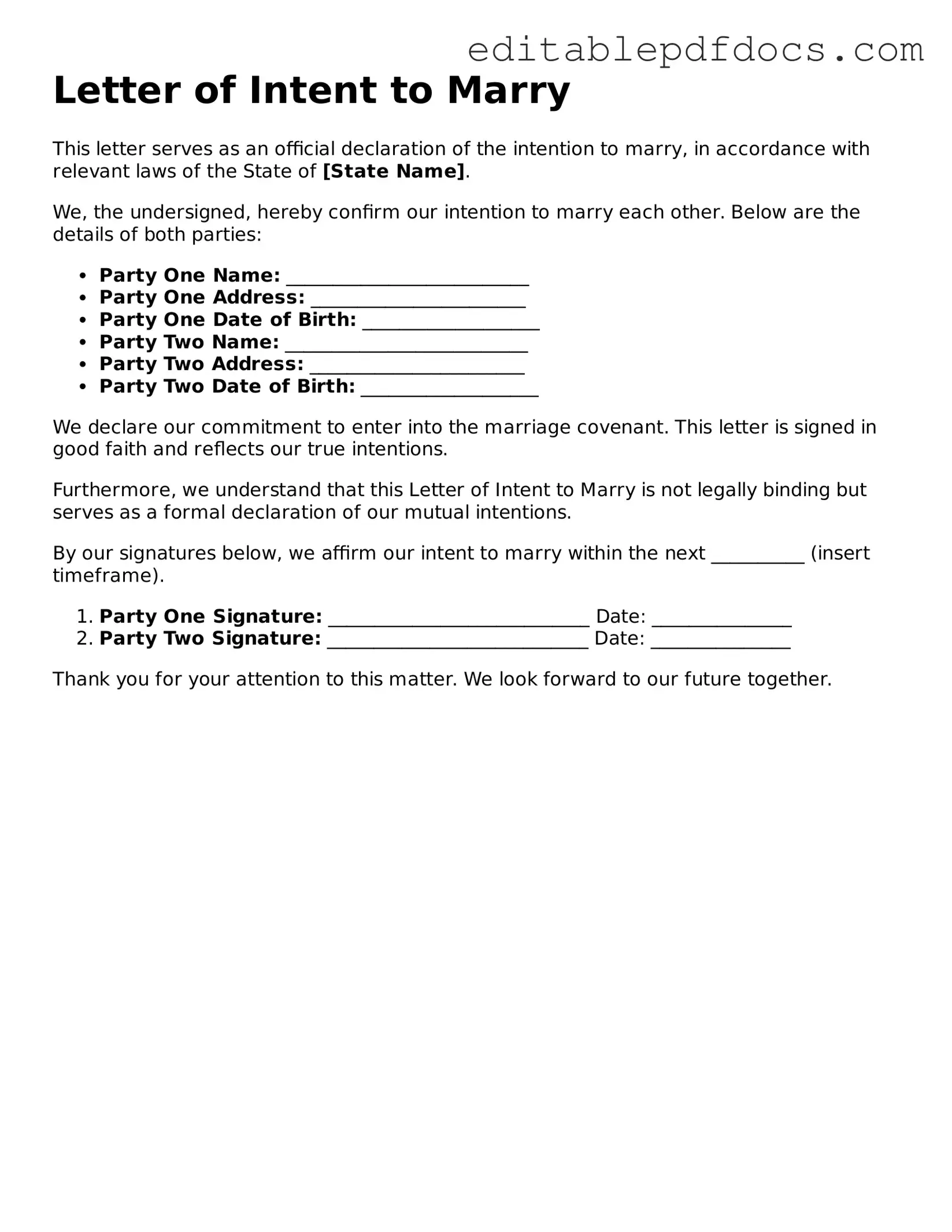Free Letter of Intent to Marry Document
A Letter of Intent to Marry is a document that expresses a couple's intention to enter into marriage, outlining their commitment to each other. This form can serve as a helpful tool for couples to clarify their intentions and prepare for the legal aspects of marriage. If you're ready to take this important step, fill out the form by clicking the button below.
Open Editor Now
